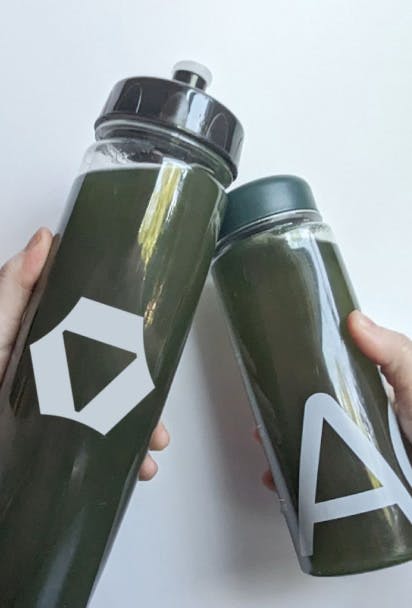This is the first blog post in a series on the tactics and benefits of deploying a comprehensive kitting solution.
Holiday kitting isn't merely about bundling products; it's about crafting experiences that sparkle with the same joy as a perfectly selected and wrapped present. Much like an advent calendar that counts down to the big day with 24 unique treats, or a curated health and beauty set, kitting has become the secret ingredient for surprising and delighting your customers all year round.
But what exactly makes kitting such a powerful tool for businesses? Imagine the delight of a customer discovering a perfectly assembled spa day kit, complete with everything needed for a moment of winter wellness, or the convenience of finding all the supplements and exercise apparel needed to properly kick off a new hobby - everything they need with no extra effort!.
This is where the science of strategic product selection meets the art of packaging – and this is where businesses find new opportunities to delight their customers while increasing revenue, loyalty and product awareness.
What is Kitting?
Kitting is the process of combining multiple individual items into a single package, creating a comprehensive and curated experience for the consumer. These kits can vary in complexity from a simple bundle of complementary products to an elaborate seasonal collection designed to tell a compelling story or share an exclusive partnership. In the world of retail and e-commerce, kitting is much more than just a sales tactic; it's a strategic approach to creating value and enhancing customer satisfaction through unique offerings found nowhere else.
Types of Kitting
As detailed in the above video, kitting can be implemented in various ways, each serving distinct purposes and catering to different business needs. Let's explore the four main types of kitting that are prevalent in the industry today.
Upstream Kitting (Manufacturer-based)
Upstream kitting occurs at the manufacturer level, where products are bundled as the product is produced. This approach puts the manufacturer in control of the assembly process. By entrusting your manufacturer you can streamline inventory management and reduce handling costs, potentially boosting efficiency.
However, upstream kitting does present notable challenges. The pre-assembled nature of these kits can lead to reduced flexibility in customization and higher inventory carrying costs. Manufacturers must carefully forecast demand, as pre-assembled kits risk obsolescence if market preferences shift. Additionally, the complexity of managing returns increases when individual components of a kit need to be processed separately, and shipping costs can be higher due to the pre-assembled bulk. This also assumes your manufacturer has the skills and the capacity to manage this on your behalf.
Downstream Kitting (Retailer or Marketplace-based)
Unlike upstream kitting, downstream kitting takes place closer to the point of sale, often done by the retailer. Retailers can customize kits to align with their branding and local audience, allowing for greater flexibility and adaptation to market trends. This approach empowers retailers to respond quickly to consumer demands and seasonal preferences.
Downstream kitting offers retailers a chance to curate unique experiences for their customers. By bundling related products, such as a skincare set with cleanser, toner, and moisturizer, retailers can provide a holistic solution to common consumer needs.
Despite its advantages, downstream kitting faces several operational challenges. The process requires additional labor resources at the retail level, which can increase costs significantly and is not likely to align with most retailers' specialty or capabilities. Retailers must also contend with space constraints for kit assembly, potential inconsistencies in assembly across different locations, and the complexity of training staff to maintain quality standards. The risk of component stockouts can disrupt kit availability, potentially impacting customer satisfaction and sales performance.
Third-Party Kitting Providers
Third-party kitting providers are specialized businesses that focus exclusively on kitting assembly. This approach can be beneficial for small to medium-sized enterprises seeking to leverage kitting without investing in additional resources, or for those with rigorous controls or oversight needed on the execution of kits, in the example of OTC or FDA controlled components.
This approach promises that businesses can tap into a wealth of expertise and technology. These providers should have quality insights to build high performing kits, and the capability of creating customized packaging at scale. However, these can often just be cookie cutter templates that are stretched to accommodate your brand vs being truly custom.
While third-party kitting can offer numerous benefits, businesses should be aware of potential drawbacks. The loss of direct control over quality assurance can be concerning, and additional costs for third-party services may impact profit margins. Companies often face challenges in communication and coordination with external providers, and longer lead times for kit modifications can affect market responsiveness. Your margins are also further stretched as you have to accommodate for transportation costs to and from this kitting specific provider, and have to contend with a long lead time and shortened selling window when transporting product to and from your kitting provider.
In-House Kitting
Some businesses choose to conduct kitting operations in-house, giving them full control over the process. This approach is most often utilized by brands just starting out or massive fully integrated brands that own their entire supply chain. Small brands often opt for this path as there are no perceived additional costs and they have complete control. The largest global brands can opt for this approach because they have the volume to support complete control and can create unique product offerings or bespoke kits with intricate designs.
While larger companies can maintain consistent quality standards and swiftly respond to changes in consumer preferences. Smaller brands can overwhelm their inhouse team and simply lack the expertise to assemble noteworthy kits. They often lack the quality control protocols, systems, and infrastructure to sustainably build a kitting operation.
The Goldilocks Option
There is, however, a secret 5th option - kitting at your fulfillment provider.
When your fulfillment provider is also an experienced kitting provider you avoid many of the pitfalls of the other options while realizing more benefits.
First, no additional transportation costs or delays to production - the product is already at your fulfillment center and is ready to be assembled.
Second, untold flexibility - you can kit to order, entirely built by your end consumer, create pre-made kits, or hybrid with customizable pre-made kits. Third, inventory management - you can avoid delays and out of stock messages by managing your pools of inventory. Missing a specific SKU needed for a kit, you can easily pull from your B2B inventory or DTC inventory. Finally, kitting expertise. This solution often means that the fulfillment provider has dedicated teams for kitting, allowing for data driven kit optimizations, packaging, and efficiencies to reduce the assembly costs. All told, this path usually accounts for the greatest flexibility, quality, and cost which all help drive your end consumer experience.
Kitting is Queen
Kitting is an excellent path for brands to expose consumers to new SKUs, create compelling sales events, drive revenue, and create an enduring positive brand association. Now that we have identified how we can tactically assemble kits, in future blog posts we will explore the best practices brands are deploying to make their kits truly memorable and effective.
Need to deploy a robust kitting solution? Our experts are ready to help.








